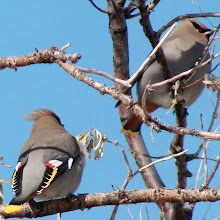This week's TOW is Sciurus lepturus.
Cutlassfish, Largehead Hairtail, Ugly As Sin. Regardless of what you call this thing, it's strikingly weird. Occurring throughout the world in relatively shallow nearshore waters, this species shows a feeding pattern known as "nocturnal vertical migration". What this means is that schools of adults hover about 300 feet off the ocean floor during the day, doing, I dunno... cutlassfish things, and then at night, they swim upwards towards the surface where they eat all sorts of delightful nektonic and planktonic crustaceans, little fishes, and squidlets.
Although this species is important in the USA only as live bait for larger species, it is a food fish on its own in many other countries. Apparently, the global take on this species has been increasing recently as evidenced by this graph: Global Cutlassfish Take. If you want more info, here's a good site: The UN's Food and Agricultural Organization Treatment
These photos were taken in a fish market in Naples, Italy, July 2009.
Thursday, March 25, 2010
Saturday, March 20, 2010
Cave Gulch and Wilder Ranch
Went on a long walk from UCSC to the Wilder Barns. Found lots of delightful flowers: milkmaids, wakerobin, redwood violet and sorrel, fetid adder's-tongue (pods slinking, but leaves still very showy), Douglas' Iris, blue-eyed grass, and an interesting yellow...um...Phacelia? in grassland. Sceloporus occidentalis, one garter snake, and a gilled giant salamander larva rounded out the herps. Only a few fungi (including one fruiting of the locally uncommon genus Flammulaster). Here are some photos to tickle yer fancies:
A pretty male kestrel, Falco sparverius, some Douglas' Iris (Iris douglasiana), a blue-bellied Sceloporus - young male? Uhh... a little help, Amy? A showy wakerobin (Trillium ovatum), and finally Ariolimax, antennae extended.
Heading to the Carrizo Plains next weekend, to see the butterflies and moths, flowers, antelope and the ants elope.
A pretty male kestrel, Falco sparverius, some Douglas' Iris (Iris douglasiana), a blue-bellied Sceloporus - young male? Uhh... a little help, Amy? A showy wakerobin (Trillium ovatum), and finally Ariolimax, antennae extended.
Heading to the Carrizo Plains next weekend, to see the butterflies and moths, flowers, antelope and the ants elope.
Thursday, March 18, 2010
Friends and Antbirds
Check out this neat page, informatively perpetrated by Brady, Terrill, and colleagues: Myrmeciza exsul
Wednesday, March 17, 2010
Taxon of the Week! (March 17 2010)

Entoloma "bloxamii"
This large, beautiful Entoloma is a common fall and early-winter denizen of redwood habitats in and around UCSC. You can easily learn to recognize this species by noticing:
1. The dry, grey-blue, sky blue or dark midnight blue cap. The depressions on the cap often have a frosty appearance.
2. Pale whitish or light blue-gray, ATTACHED gills that yield a PINK SPORE PRINT
3. The thick, fleshy, white stipe that is often tinged blue.
4. GROWTH ON GROUND.
For those of you who were at Oscar's house on my birthday last year, we ate some of these, simply sauteed. Not cause for much excitement, but notable for being one of the few edible Entoloma locally.
This species was originally described from Europe, where it grows in a radically different habitat. I would be surprised if molecular and further microscopic comparison didn't support the separation of these two species. Hence, the quotes around the species epithet...
UCSC Mushroom Tri-fold Field Guide
For a couple months, Chris Lay (the Admiral, uh, I mean, Curator... of the UCSC Museum of Natural History Collections), and I have been working on creating one of those fold-out map-style field guides for mushrooms of the UCSC Campus.
I'm tickled pink to report that we are very close to finalizing our first attempt at a product in this format.
20 species, each with a (hopefully not too small) color photo, and a terse (but hopefully astonishingly useful) blurb of text.
If you know me, you can imagine how hard it was to narrow the list to 20 species. And it was. But I feel good about the species that made the final cut, and hopefully we'll be able to build a larger version in the coming months.
Special credit to Noah Siegel for contributing a number of beautiful (and taxonomically useful) photos (including the cover shot) to the project.
Pending consultation with the UCSC bookstore and copyrights office, we hope to sell this thing at Bay Tree, at the 2010-2011 Fungus Fair, and around town at whatever bookstore will host us.
Subscribe to:
Comments (Atom)










